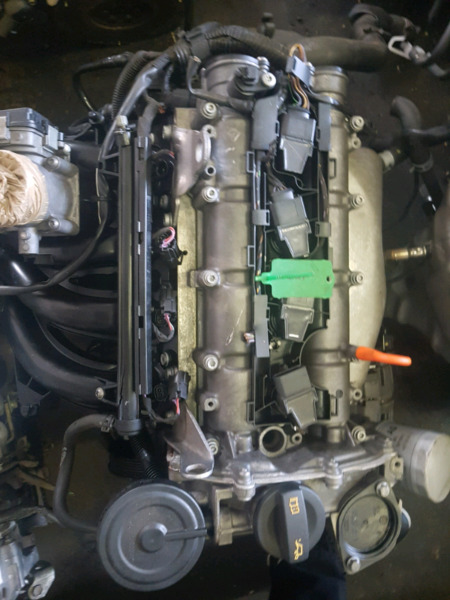Boost fuel efficiency with a top-tier clp engine.
Boost fuel efficiency with a top-tier clp engine.
Blog Article
How a Clp Engine Can Enhance Performance in Different Industries
The development of CLP engines notes a significant change in functional efficiency across different markets, driven by their capacity to maximize fuel intake and reduce downtime. Industries such as manufacturing and logistics stand to gain substantially from their durable style and regular power result, which assure to streamline operations and boost productivity. As companies increasingly prioritize sustainability alongside effectiveness, the duty of CLP engines becomes much more critical. What remains to be seen is exactly how these advancements will form the future landscape of industrial procedures and their impact on wider financial trends (clp engine).
Summary of CLP Engines
CLP engines, or Continuous Liquid Propellant engines, represent a substantial development in propulsion technology, particularly for room applications. These engines make use of a continual feed system that permits the sustained expulsion of propellant, leading to enhanced performance and efficiency contrasted to conventional strong or hybrid propulsion systems. By keeping a continuous flow of liquid propellant, CLP engines can achieve more precise drive control, which is important for maneuvering spacecraft in numerous goal situations.
The style of CLP engines integrates advanced products and cutting-edge fuel administration systems. clp engine. This causes decreased weight and raised dependability, vital aspects for long-duration space objectives. Moreover, the continual operation reduces the risk of burning instability, a typical obstacle in conventional rocket engines.

Benefits in Production
The manufacturing of Continuous Fluid Propellant (CLP) engines offers numerous remarkable benefits that boost both performance and cost-effectiveness. One of the primary advantages is the structured production procedure, which lowers the intricacy associated with typical propulsion systems. By using liquid propellant, makers can attain greater accuracy in engine efficiency, causing maximized energy outcome and minimized waste.
Furthermore, CLP engines promote a higher degree of modularity, enabling for much easier combination right into numerous manufacturing lines. This flexibility can significantly lower preparations and improve overall functional flexibility. Using CLP innovation likewise often tends to decrease the requirement for comprehensive upkeep as a result of fewer relocating parts, which converts into lowered downtime and operational costs.

Applications in Logistics
Leveraging Continuous Fluid Propellant (CLP) engines in logistics provides considerable benefits in functional effectiveness and integrity. These engines offer a robust service for numerous transportation requirements, allowing the seamless movement of goods throughout large ranges. The integral style of CLP engines allows for regular power output, which translates into smoother and more predictable transport schedules.
Among the key recommended you read applications of CLP engines in logistics remains in heavy-duty products transport, where they can drive both ground and airborne cars. Their capacity to keep high performance under differing load problems makes sure that distribution timelines are satisfied, thereby improving client fulfillment. Additionally, CLP engines can be integrated into automated logistics systems, assisting in real-time tracking and maximizing route planning.
In addition, the toughness of CLP engines reduces maintenance downtime, enabling logistics business to optimize their operational abilities. This is specifically beneficial in warehousing procedures, where performance in handling and transferring products is critical. As logistics proceeds to advance, the integration of CLP engines represents a forward-thinking method that not only boosts efficiency however additionally sustains the sector's expanding needs for dependability and speed.
Influence on Power Effectiveness
Exactly How do Continual Fluid Propellant (CLP) engines boost power performance in transportation? CLP engines use a consistent flow of liquid gas, optimizing burning processes and keeping a secure drive result. This design reduces power losses connected with traditional burning engines, where gas distribution can vary and lead to inadequacies.
The constant operation of CLP engines enables for an extra effective thermal cycle, causing higher particular impulse compared to traditional engines. clp engine. This equates to decreased fuel consumption for the exact same amount of job done, significantly lowering operational expenses throughout different transport markets, including aeronautics and maritime markets
Furthermore, the capacity of CLP engines to maintain ideal these details performance under varying tons conditions decreases the demand for regular velocity and deceleration, better enhancing fuel performance. Boosted energy effectiveness not only adds to cost financial savings however additionally leads to lower greenhouse gas exhausts, aligning with global sustainability goals.
Future Trends and Innovations
Arising innovations in Constant Fluid Propellant (CLP) engine technology promise to reinvent the landscape of transportation performance and sustainability. As industries pivot towards greener alternatives, CLP engines stand at the center, integrating cutting-edge materials and layout methods that improve performance while decreasing environmental effect.
One of the most encouraging fads is the fostering of crossbreed systems that combine CLP engines with renewable resource resources. This harmony can maximize fuel intake and lower discharges, aligning with global sustainability objectives. Improvements in computational fluid characteristics (CFD) are helping with the style of more aerodynamically effective engines, leading to minimized drag and improved fuel performance.
Moreover, the growth of smart surveillance systems is set to enhance operational efficiencies. These systems take advantage of data analytics and IoT modern technology to maximize engine performance in real-time, guaranteeing that the engines run within their most reliable parameters.
As research proceeds to explore different propellant formulas-- such as biofuels and synthetic gas-- the future of CLP engines Find Out More looks promising. By using these technologies, sectors can not just improve their effectiveness however additionally add significantly to a cleaner, much more lasting future in transportation.
Conclusion
Finally, CLP engines stand for a substantial development in effectiveness throughout several sectors. Their capacity to enhance fuel usage and reduce functional prices, combined with a continual feed system, enhances power result and functional dependability. The integration of innovative products and fewer relocating components lessens maintenance demands, while placement with sustainability goals settings CLP engines as a pivotal technology for the future. Proceeded innovation in this area assures further enhancements in performance and environmental efficiency.
Report this page